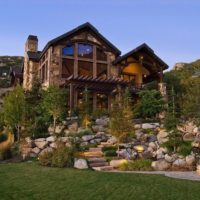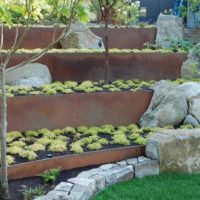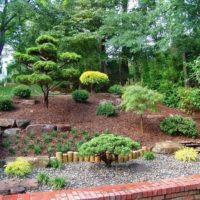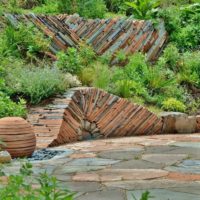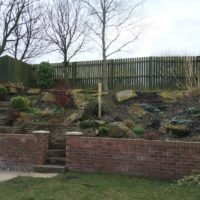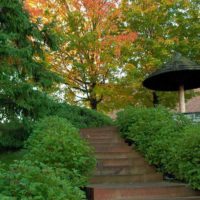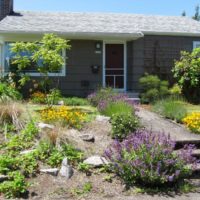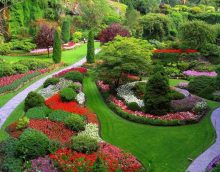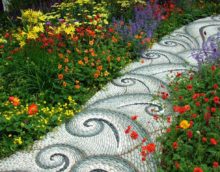Landscaping on a slope
Many hillside owners do not understand their happiness. They only complain about the troubles associated with the non-standard arrangement of the territory, not realizing that they got a unique example of the mastery of nature, which can be turned into something even more special.

The landscape design of the site on the slope looks peculiar, often fabulous. Winding paths, stone terraces, elevations - all this only decorates an uneven area
A plot on a slope requires certain efforts and costs, which also scares away unlucky lovers who do not want to transform a summer cottage. This article will help to give an idea of the methods and techniques of landscaping in a similar area.
Content
Land on the slope: features of landscape design
Fortifications can be done with your own hands, but this requires a detailed study of the area.

The main technique in the design of the inclined section is terraces that help visually smooth the elevation differences and add sophistication to the overall landscape
Priority Issues:
- What is the slope of the slope?
- How close are groundwater?
- What are the features of the soil?
- If there is a pond nearby, is there a risk of a site washout?
- What is the ground pressure on the slope?
- What reinforcement material is best suited?
- Which areas are most in need of strengthening?
You can answer all these questions yourself, as well as take the help of an expert who will conduct a professional analysis of the area and give recommendations.
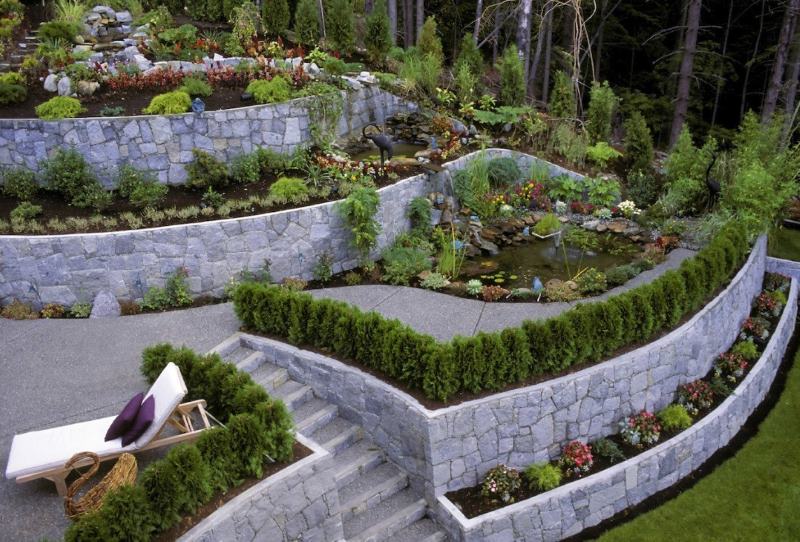
As a result, on a problem area with a slope, you can organize a very effective design that cannot be obtained on the ground with a horizontal surface
Fortifications and decorations
So, if you are well prepared, then you need to choose the best option for strengthening the site on the slope.
- To strengthen the soil, you can plant plants that have a sufficiently strong root system. This method is ideal with a slight slope. For this, special molds are acquired in which plants are planted; the root system is intertwined with the forms of fastening and will create a solid soil, preventing the risk of landslides or landslides. Plants with a strong root system are: juniper, Chinese blackberry, hawthorn, and lilac.
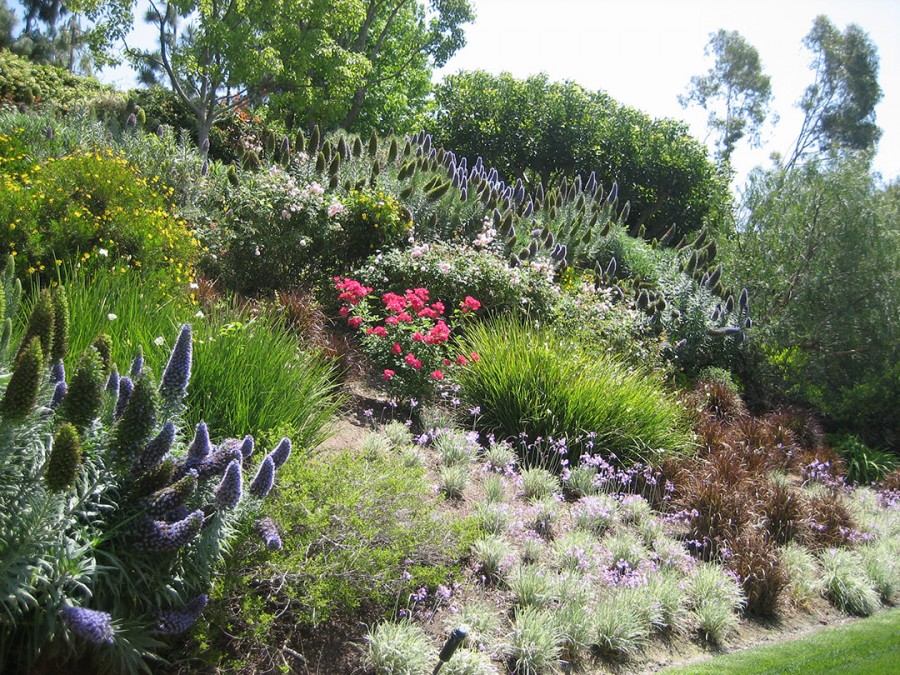
Natural strengthening of the slope is done by planting bushes with powerful root systems
- The erection of the fence becomes an acceptable way to strengthen the soil, because it provides a long service life, does not interfere with the prosperity of plants, does not need careful care. The materials from which fences are usually built on the slope are sandstone, concrete slabs, limestone, and brick. When erecting a fence, it is important to take into account some nuances. You must be sure of the strength of the base, the height of the fence should be at least one meter, and the thickness should be 1/3 of the fence. It is important to eliminate the slightest chance of washing by adding a cascade design. Since the site is sloped, it is necessary to provide the same slope for the fence.

The fence on the slope can be performed in the form of gradually decreasing horizontal steps or in the form of inclined sections
- Stones and logs will become the embodiment of simplicity and quality.Having previously studied the surface of the site, they dig into a sufficient depth in the ground. To ensure the aesthetics of the site will be able to classic drainage.

Low retaining walls are laid out without foundation
- A good choice can be geotextiles in rolls, which include polyester and polypropylene. This option protects against water inflows, freezing, accidental damage. One of the advantages is ductility, which makes geotextile rolls easy to use.

Geotextile passes water in a metered volume and holds various bulk materials on its surface
- Materials from geomats form polypropylene grids, providing complete waterproofness. The grilles do not contain toxic substances, are resistant to damage from sunlight, naturally aesthetic, resistant to heat, do not require special skills for installation.

Strengthening the slope of the summer cottage with a geogrid
The choice of material, in most cases, depends on the slope angle and soil analysis of the territory on the slope. It is necessary to consider this issue with all pedantry.
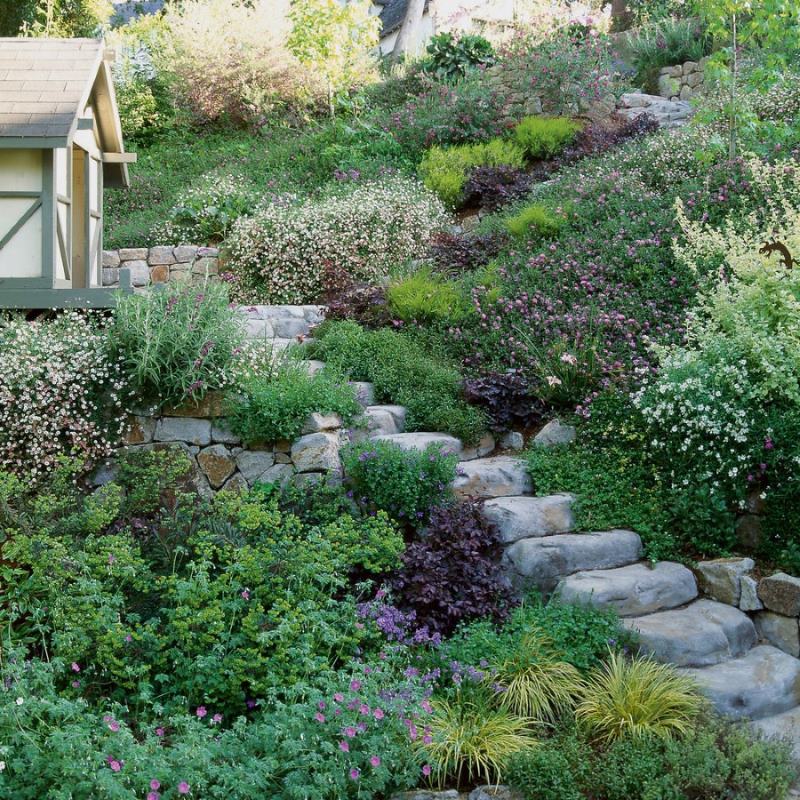
Never plant tall trees on a steep slope, with strong winds they can uproot them
Soaring gardens and nature views
The landscape design of the site on the slope allows you to implement a lot of design decisions. Some costs will be required to create an aesthetic component of the site on the slope. The choice of design is carried out depending on the location of buildings, places to relax, terraces, stairs and even cardinal points.
The construction of terraces creates a picturesque and vibrant picture in the summer cottage. Experts advise to abandon symmetry by arranging terraces by chance. The lack of consistency gives a natural look to the landscape, completely likening it to a natural creation.

The slope platform with stunning panoramic views is the perfect place to relax.

The waterfall will decorate the slope of the garden plot, and if well decorated with stones and plants, it will create the impression of a natural source
The terrace can be positioned on any ground. For the wet surface of the site, a drainage embankment from crushed stone is used, it will give stability to the structure. Terraces are complemented by cut-off parts of pipes, which will provide groundwater to the surface, preventing their accumulation under the structure.
Terraces always imply paths and paths. Steps are made in some places. Various materials are ordered for retaining walls of terraces:
- brick;
- tree;
- concrete;
- cement.
If the slope is too steep, it is highly recommended to use cement mortar for retaining walls. Also, for the construction of terraces, it is necessary to conduct electricity to illuminate these places at night.

A small slope can be strengthened with wooden supports

Significant elevation changes will require concrete work.

Materials for retaining walls can be combined
When you design a summer cottage, you can release all the accumulated ideas. Create a unique site image using asymmetric lines. Flowerbeds bordered by elements of an unusual relief will become evidence of a refined taste.
One step, two step
It is impossible to imagine a summer cottage without the main attribute - steps. The main staircase may be part of the terrace or located somewhere on a slope. The steps should be of a certain width so that the muscles of the legs do not strain once again, and also fit the general style of the summer cottage on the slope.

On steep slopes, stairs are equipped with handrails
All kinds of tracks are created from serpentine, and for movements that are too long in time, transitions are provided on which benches are installed. You can decorate places of rest from transitions with busts, statues, fountains or small ponds with exotic fish.

A straight path will smooth out sharp changes in relief
Stairs are usually made of materials such as:
- concrete;
- brick;
- a rock;
- tree.

The staircase can be stone, brick or wooden.
Creating landscape design on a slope, it is recommended to choose the same, preferably light material, from which terraces were made on the land. The aesthetics of the paths are supported by large decorative elements, as the florists note - this gives more contrast to the green flora of the site.
Rules of gardening a summer cottage on a slope
The harmonious combination of flower pots and shrubs grows into an amazing and peculiar corner, where you can have a good time contemplating the beauty of plants. It is recommended to install a bench in such a place in order to achieve maximum comfort.

Thyme, stonecrop, soap dish and phlox grow well between the stones

Coniferous plants are ideal for the northern slope.

Rockeries and flowerbeds will be well on the southern slope

The western side is suitable for flowers and shrubs, loving soft growing conditions.
Decorative arches and grasses that complement each other grow into a single landscape image on the slope, so you need to subtly feel what is best suited for this area. Of the choice of plants most often recommend:
- thyme;
- cotoneaster;
- bells;
- feather grass;
- geranium;
- phlox;
- roses;
- dogrose.
The dense green or myrtle color of cotoneaster turns to oily blue in low night light, and the blue, cobalt color of phlox behaves like fake green. The red, full-blooded color of roses is filled with life only in sunlight, but dies, turning dark red under the moon. Conversely, from the pale green color of thyme a slight blueness is expelled in daylight, leaving only a cloudy aftertaste.
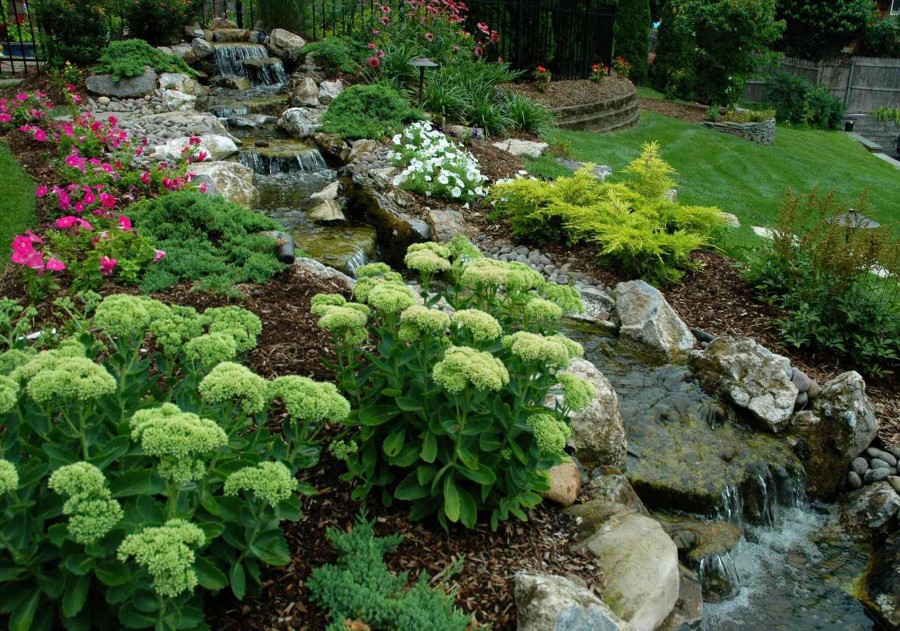
Choose unpretentious groundcover plants that strengthen the soil and give aesthetic pleasure
Arrangement of the garden involves painstaking work with shades. Depending on your temperament, personal preferences and lighting, the right combination of colors is selected. Choose a dominant color, and after that decide on auxiliary shades.
Planting annual plants involves preliminary soil preparation. It will take great physical effort.

For lovers of natural style, a “wild” slope design is suitable
For planting garden plants, the southern slopes are chosen, since they have more sunlight, from which the soil warms up faster, increasing the yield. Grapes, apple trees, apricot and peach trees are planted in the upper part of the plot. For plants that are afraid of the cold, the bottom of the plot is best.
Beds of tomatoes, cucumbers, peppers and onions feel comfortable on the slope areas. However, it is worth worrying about possible skvosnyak. A fairly high fence can protect the garden from strong winds.

Neat boxes on the slope of the garden

More budget version of beds, moreover suitable for steep slopes
Video: Hillside Garden







